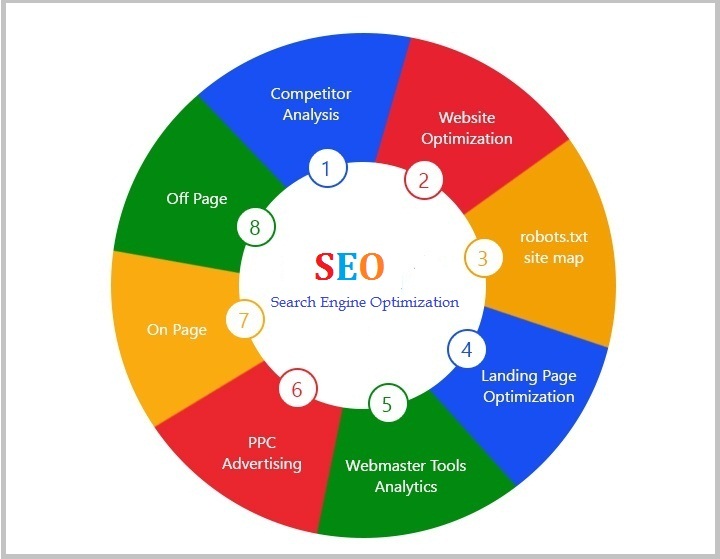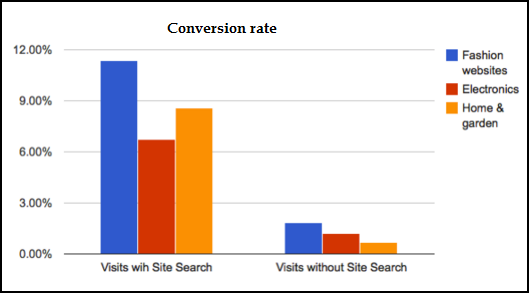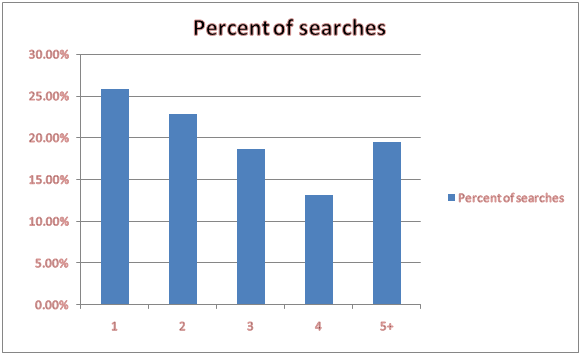


Two development firms in Big data and Analytics space; DATA -Tableau and Hortonworks saw a critical time when their data released missed the forecast by 0.05$, and dropped their stock by five percent. This is what going frequently with companies and no one has any clue on what is going on with BI business Intelligent and Hadoop space. Should companies run from BI and Big data space before it completely collapses?
Instead of focusing on the sensational headlines; the investors and technology corporate leaders should also focus on the missed forecasts as they leave some clue on some important analysis and trends which will help them to grow.
While the companies need to look at their results in the context of the industry as a whole; which will show the exact results as per the worldwide analysis. As per the Gartner’s analysis for worldwide dollar-valued IT; it says that IT spending has grown in 2016 at a flat percent of 0.0. However, 35% of growth is fairly incomparable by this benchmark, and if we look at Hortonworks’ results for this gone quarter: then the total revenue grew by 46% year over a year.
This means, the Investors’ expectations are growing high and even they are tough to manage. To manage this kind of issues the industry observers and technology buyers should standardize the performance of both organizations against the rest of the industry before they make a knowledgeable conclusion.
As per recent survey —Teradata also reported revenue and its business shrink by 4% Year over a year. Leaving other things remaining equal, the analysis says that Hortonworks could generate more revenue than Teradata by 2020.
Let’s look on some of the data analysis pitfalls you should avoid before you are sucked in.
Confirmation Preference
If you have a proposed explanation in your mind; but you are only looking for the data patterns that support it and ignore all data points that reject It. Then let us see what will happen.
First, analyze the results of that particular patterns performed well and find the conversion rate on the landing page. This will help you to really perform high than the average you think. By doing or following such analysis you can use that as the sole data point to prove your explanation. While, completely ignoring the fact of those leads will qualify or the traffic to the landing page will be sub-par.
There is again a thumb rule which is very important to remember, you should never approach data exploration with a precise conclusion in mind; as most of the professional data analysis methods are built in a way that you can try them before you actually go and reject your proposed explanation without proving it or to reject it to the void.
Correlation Vs Cause
Combining the cause of a fact with correlation somewhat will not show any action. While, when one action causes another, then they are most certainly correlated. However, just because two things occur together doesn’t mean that one caused the other, even when it seems to make some sense.
You might find a high positive association between high website traffic and high revenue; however, it doesn’t mean that high website traffic will be the only cause for high revenue. There might be an indirect or a common cause to both that may help to generate high revenue more likely to occur when high website traffic occurs.
For example, if you find a high association between the number of leads and number of opportunities from a classic B2B data quest, then you might gather a high volume of leads with a high number of opportunities.
Here are some more things that you need to watch when doing data analysis:
• Do not compare unrelated data sets or data points and conclude relationships or similarities.
• Analyze incomplete or “poor” data sets and make proper decisions based on the final analysis of that data.
• Do not analyze the data sets without considering other data points that might be critical for the analysis.
• The act of grouping data points collectively and treating them as one. Which means, looking at various visits to your website and creating unique visits and total visits as one and inflating the actual number of visitors and converting it to the best conversion rate.
• Do not ignore any simple mistakes and oversights which may happen anytime.
...
Read More

Use social media to make your job search more effective and efficient. We can see that social media profiles have become an important part of our everyday life, whatever technology or platform you choose you’re likely to have a few different accounts online. You can create your own brand by making your profiles online, especially when working in digital it is very important to realize what you add online!
Dos

Don'ts
As long as you’re conscious about what you put online, you’re on the right track! If you have any questions, don’t be shy! Head over to our LinkedIn, Twitter, Facebook or Google+. We practice what we moralize!, and drop us a line!
...
Read More

Search has become integrated into the fabric of our society. With more than 197.9 billion searches performed worldwide each year since April 2014, more or less 6.6 billion web searches will be performed every day. That means on an average about 7,500 searches are performed every single second of a day. Moreover; users have grown to wait for that the responses to their search queries will be returned in less than one second.
If you have ever come across, the various “SEO is dead”, that claims to make the rounds play periodically in the digital marketing world, rest assured — SEO is both alive and well — and has not as many feared and been killed by social media marketing as a driver of web traffic. However, in November 2014, Twitter announced that by renewing its focus on SEO, it has increased the numbers of visitors coming to the site tenfold — from 7.5 million to 76 million visitors in a month.

The demand for search continues to be high; because of the people can now obtain in mere seconds information that 20 years ago would have required planning a trip to the nearest library, the usage of card catalog and the Dewey Decimal system and a physical search through halls of printed volumes — a process that could easily have consumed two hours or more. Through the new channel of search, people can now conduct many of their favorite searches, shopping, banking and personal transactions online—somewhat the things have changed the way our global population lives, interacts, and connects to each other.
The dramatic shift in behavior represents what the investors are likely to label a disruptive event – an event that has changed something in a fundamental way. Search Engines have been always the center of this disruptive event, and having businesses on website con-tent appears highly in the search engines when people try to look for the service, product or for any resource that business provides is critical to its survival. This is the situation for every business now and then; as most of the paths to success, obtaining such prime search results in real estate is not a simple matter. However, this is how the search engine optimization works in promoting your business.
The Mission of SEO

Web searches are free to use and yet very informative; as there are many available search engines to find what they are seeking, so the burden is on the search engines to develop a related, fast and fresh search experience. Most of the part search engines achieve this by being professed as having the most relevant results and delivering them the fastest, the users will search thinking that they will get them to what they are looking in for and want it in the least amount of time.
As a result, search engines invest an incredible amount of energy, time and capital in improving their significance. Thus, this includes performing wide studies of user responses to their searches, comparing their search results against those of other search engines, and conducting eye-tracking through a click- rate studies and constructing PR and other marketing campaigns.
How will SEO help businesses to Grow?
The recent survey says that the digital market and marketing through search engines is adequately grown as never compared. The basic marketing strategy is always helpful for many businesses to grow, but is it that enough or do they still need to spend more time on marketing strategy is the big question in many organizations, companies or businesses.
Here is the answer— you can generate good revenue primarily with the help of Search engines through paid advertising; though the majority of this revenue will come from pay-per-use or cost-per-click models, in which the advertisers pay only for users who click on their ads. As we know that the search engines’ success depends on the relevance of their search results, manipulations in search engine rankings result in non-relevant results, and these type of results are generally referred to as spam, and should be dealt very seriously. Each major search engine employs a team who focuses solely on the result or eliminating the spam from their search results; this is generally referred as “web spam” teams. However, this matters to SEO professionals as they use more tactics to promote the products or service, and they should not land the spam by the search engines, as this would carry more risk of incurring penalties for the websites they work on.
The Human Goals of Searching
When we need some sort of information, or to know something it all depends on upon your search. The basic goal of any human search is to obtain the information relevant to a specific set of keywords or phrases you enter into the search field; which is also known as a query. A searcher may invent the query as a question, but the majority of searches are performed by simply entering word combinations, and leaving the search engines to do their work of determining the “objective.” One of the most important essentials to build an SEO strategy for a website is developing a thorough understanding of your targeted audience, and how they use combined words and concepts to obtain information about the services or products you provide. Once you know how an average searcher or more specifically your target market utilizes query-based search engines, you can more efficiently reach or retain those users.
Search engine usage has increased over the years; however, the major principle of conducting a search remains largely unchanged. Let us understand the following steps most of the search engine consists:

When this process results in the acceptable completion of a task, you can create a positive experience for the user by the search engine, and the site providing the information or the result.
We learn more on Digital Marketing strategies and how to determine Searchers Intent and the challenges for Search Marketers and Search Engines in our next blog.
...
Read More

Digitalization and networking are prime forms of 21st century learning. The world is much smaller and thanks to technology; which made learning more transforming into a globally collaborative enterprise. For example professional, networks allow the scientific community to share discoveries much faster than the others.
The scientists of Harvard are considering that “sharing discoveries is more efficient and honorable than patenting them.” This idea embodies the true spirit of a successful professional learning network: collaboration for its own sake.

Educators should aim to be connected to advance their craft; and on another level, they need to use networks to prepare and the teach students and make them ready with the ever changing technological needs; as this will make them available in the changing job market. However, what is the best way to approach professional learning networks - PLNs?
The recent learning networks are based on the theory of connectivism, or learning from varied social webs. Connectivism implies to learning that relies on communicating ideas with many people at same time. Professional learning networks facilitate learning through meaningful interactions; the advantages of these networks today are two-folded. In one way, they help to improve the classroom teaching and to develop new projects; and on the other hand, they act as a form of shared intelligence that changes communal perceptions.
We will see more details on what are the ways to grow your PLN and improve the quality of your interactions; as there are diverse ways to build your network and many new management tools.
...
Read More

Stress in any and every organization has become common today, but excess stress can interfere your personal and professional life. This can be a cause to break down your professional network which will in fact impact on the productivity and spoil your physical and emotional health. Your ability to deal with it can mean out of the difference between success and failures.
It’s not in your hand to control everything at your workplace, but this doesn’t mean that you are powerless – when you are struck in any difficult situation. Finding ways to manage workplace stress or looking out to opt out of hat job will not be that helpful as it will give you temporary relief, but rather focusing on one thing will always be within your control.
For workers anywhere, the financial system may feel like an emotional move with layoffs and budget cuts which result increased fear, insecurity, and high-level of stress.
Your emotions should be communicable as stress can impact the quality of your interactions with others and sometimes many people lose their prospects because of this. The better you manage your stress, the more you'll positively influence those around you, and the fewer others stress will negatively affect you.
Let us look at some more tips that will help you to come out of stress and help yourselves to grow professionally and personally.
There are many ways to reduce both your personal stress and the stress you get on the job side. They include:
When you feel stress at your workplace, you lose confidence and become irritable or introvert. This is the first reason which will make you less effective and less productive in your job. Thus, it also makes your work less rewarding. When you start ignoring the warning signs of stress at your workplace it leads to bigger problems. Chronic and intense stress can also lead to physical and emotional health problems.
Signs and symptoms of excessive stress at job
Common Causes of excessive Stress
When you are unable to manage stress at work, improve your personal life, as it adversely impacts your health and makes you stress-free. When your own needs are taken care of, you will be stronger and resilient to stress. The better you feel, the better you’ll be equipped to manage your work stress without becoming overwhelmed. Taking care of yourself doesn’t mean that you overhaul your total lifestyle. Small to small things can lift up your mood, increase your liveliness, and make you feel that you’re back in the driver’s seat again.
Start your day with positives and always take things one step at a time, as this helps you to make more positive lifestyle choices, and you can soon notice a decline in your stress levels, both at home and at work. Get into regular exercise as it is the first stress burner; listen to good and soothing music, read good books, eat your favorite food which will not only increase your energy levels but help you to take the physical stress. To be positive in every situation is always suggestible by experts; so start adapting it. Break up your activities and do what you like most first, last but not least have a sound sleep as this will help you to wake up with a fresh mind and start your day with a refreshing way.
When your work and workplace stress threatens you, there are simple steps to regain control over yourself in some situations. Always be the first to adapt the ability to build a sense of self-control in stressful situations, as this will help you to be well-received by your managers, coworkers, and subordinates alike, and which also lead to good relationship building at your workplace.
As we discussed, every job today is very stressful, retaining a large measure of self-control and self-confidence by learning and practicing emotional intelligence has also become very important in today’s lifestyle. Emotional intelligence is the skill which helps you to manage your emotions in positive and practical ways and use them properly. When it comes to love your work and increase the productivity, emotional intelligence matters just as much as intellectual ability. By adapting this skill you can communicate with others and draw people to you, one can easily overcome differences, fix wounded feelings, and learn how to defuse tension and stress.
Many of us take job stress and make their jobs worse with negative thoughts and behavior. Breaking out your stress at your workplace will never help you, but it makes your job more complicated. Thus to get rid of such situations one has to turn around these self-defeating habits so that you can very easily be able to handle the situations.
No project, situation, or decision is ever perfect, so trying to achieve perfection on everything will just add needless pressure to your work and day. Setting unrealistic goals and struggling to reach them is setting you up to fall short. Always aim to do your best, so that no one will ask for more than that.
Be on time and do not run late, set your clocks and watches fast to give yourself extra time. Do not make your desk mess, throw away the clutter; and make sure that you are aware where everything is as it saves your time and cuts stress. Make to-do lists and plan your day to make feel less overwhelmed.
The manager should play the major role as to keep stress levels in the workplace to a minimum. As they can act as positive role models, particularly in times of high stress. If the manager can remain calm in stressful situations, it is much easier for employees to also maintain their calm.
In addition, there will be many organizational changes that managers and employers can make to reduce stress in the workplace. That include:
Communicating effectively at work can help you to improve the teamwork; decision making will be easy with problem-solving techniques. That means not just by understanding the words or the information being communicated, you can also understand the emotions the speaker is trying to communicate within the group.

...
Read More